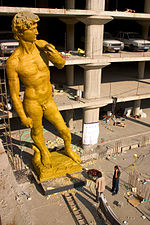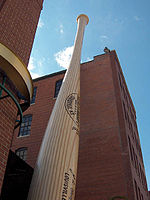West Main District, Louisville

The West Main District is one of the five districts of downtown Louisville, Kentucky. The district, or a portion of it, is listed in the National Register of Historic Places as West Main Street Historic District, due to its containment of some of the oldest structures in the city. The buildings of this district boast the largest collection of cast iron façades of anywhere outside New York's SoHo district. The district also features "Museum Row", a collection of several notable museums located within just a few blocks of each other. The district, named for its main corridor of West Main Street, includes the 800-600 blocks of Main and the southern side of the 500 block.
Excerpt from the Wikipedia article West Main District, Louisville (License: CC BY-SA 3.0, Authors, Images).West Main District, Louisville
West Main Street, Louisville
Geographical coordinates (GPS) Address Nearby Places Show on map
Geographical coordinates (GPS)
| Latitude | Longitude |
|---|---|
| N 38.25723 ° | E -85.7621 ° |
Address
West Main Street 710
40202 Louisville
Kentucky, United States
Open on Google Maps







